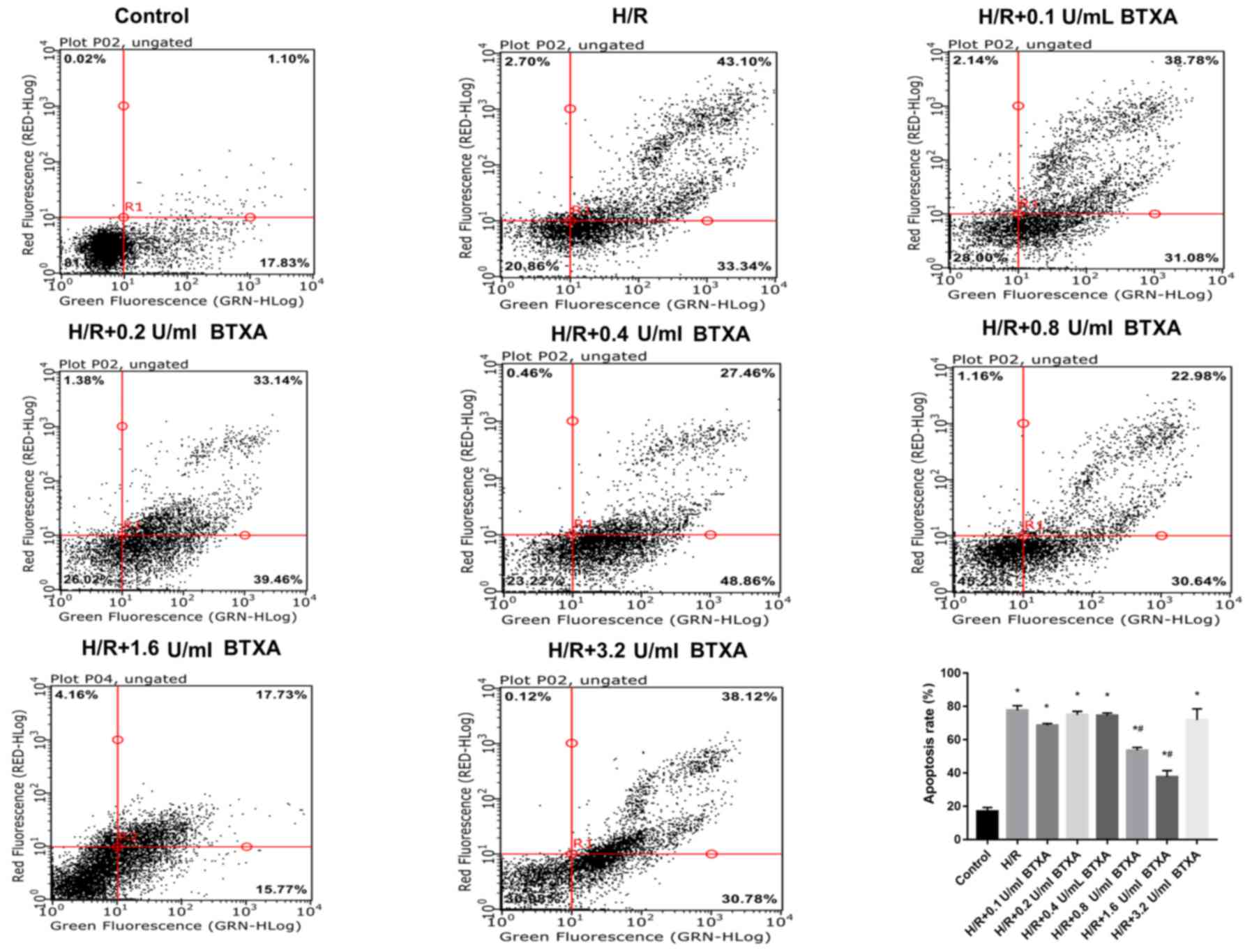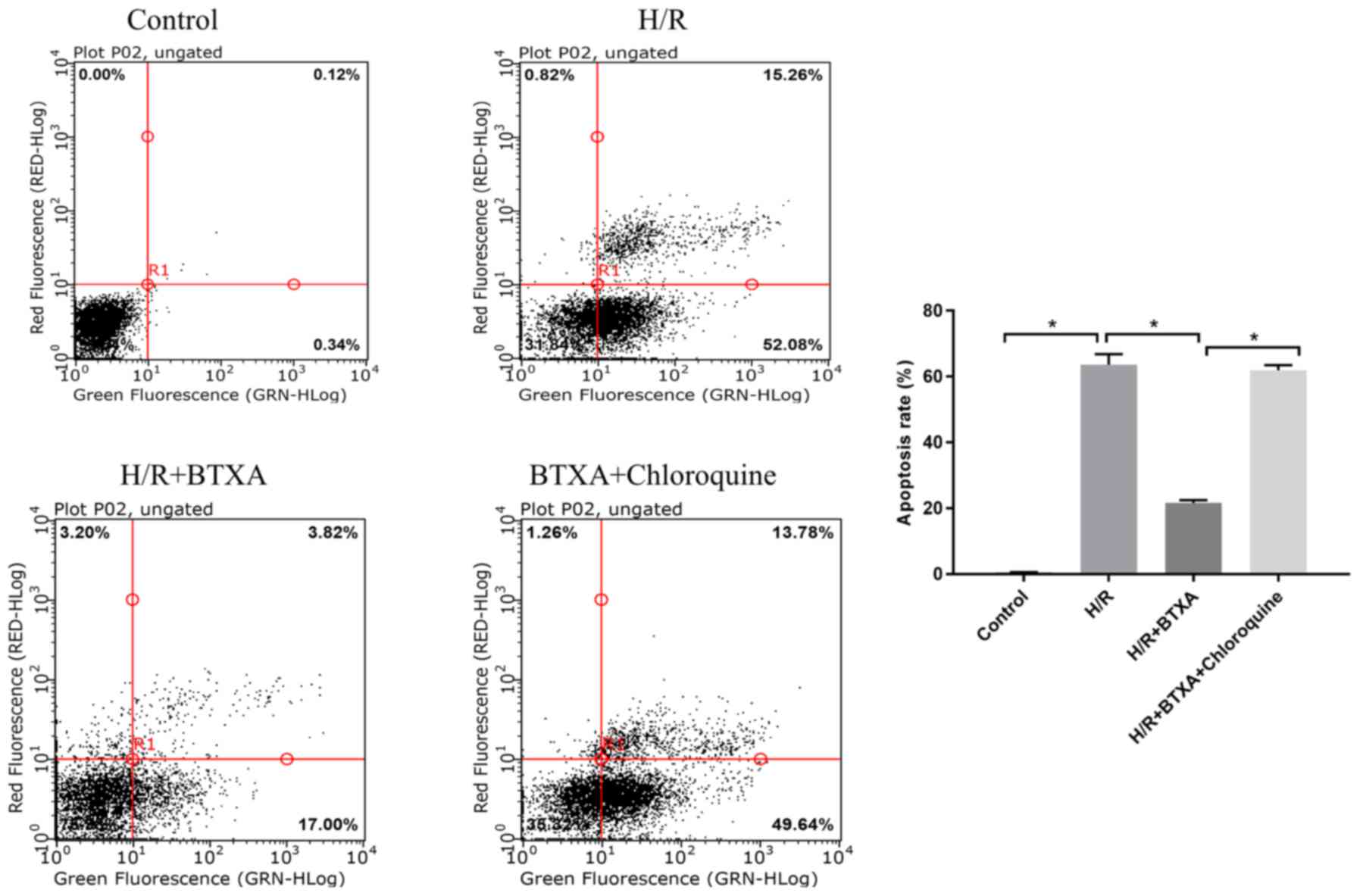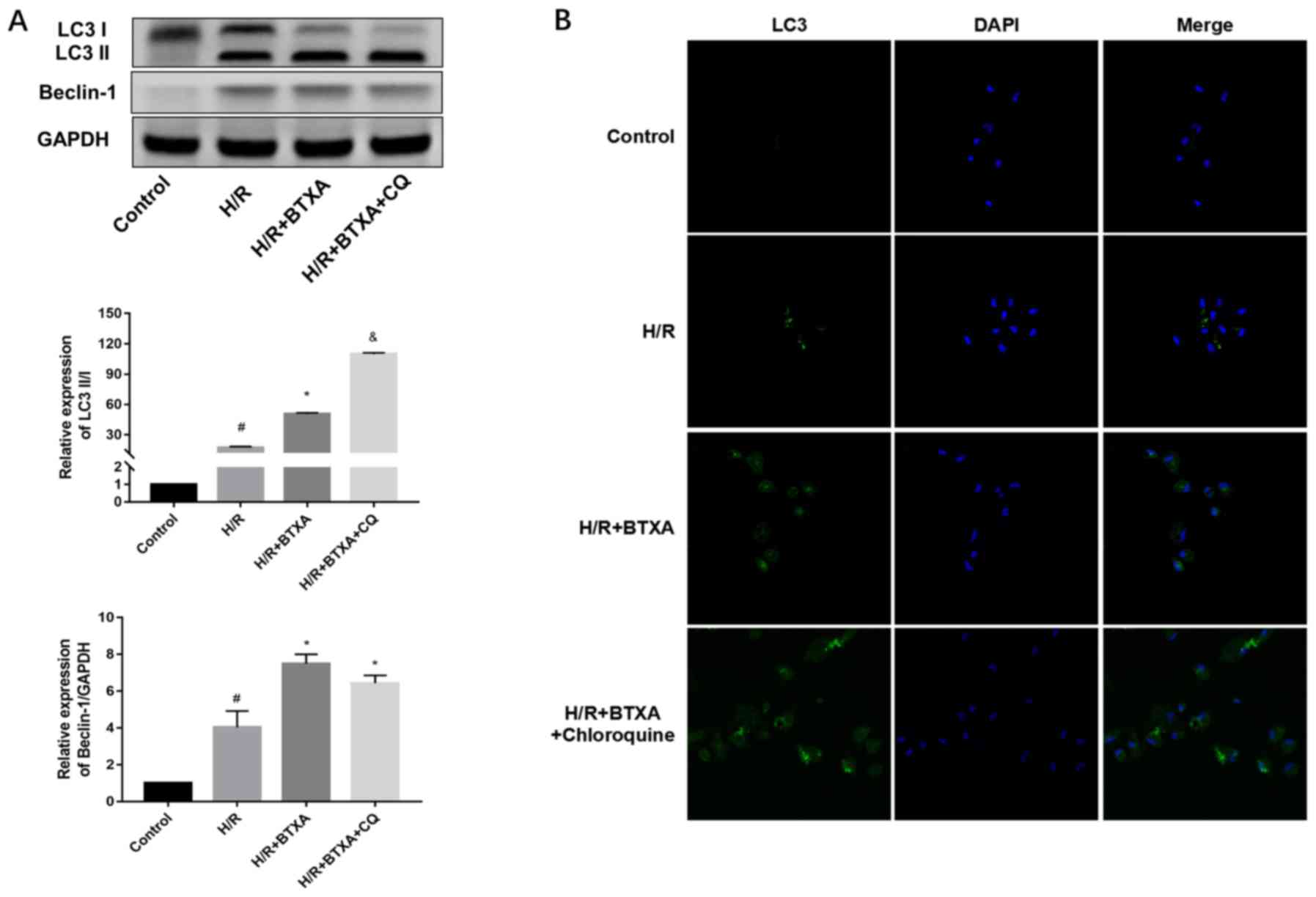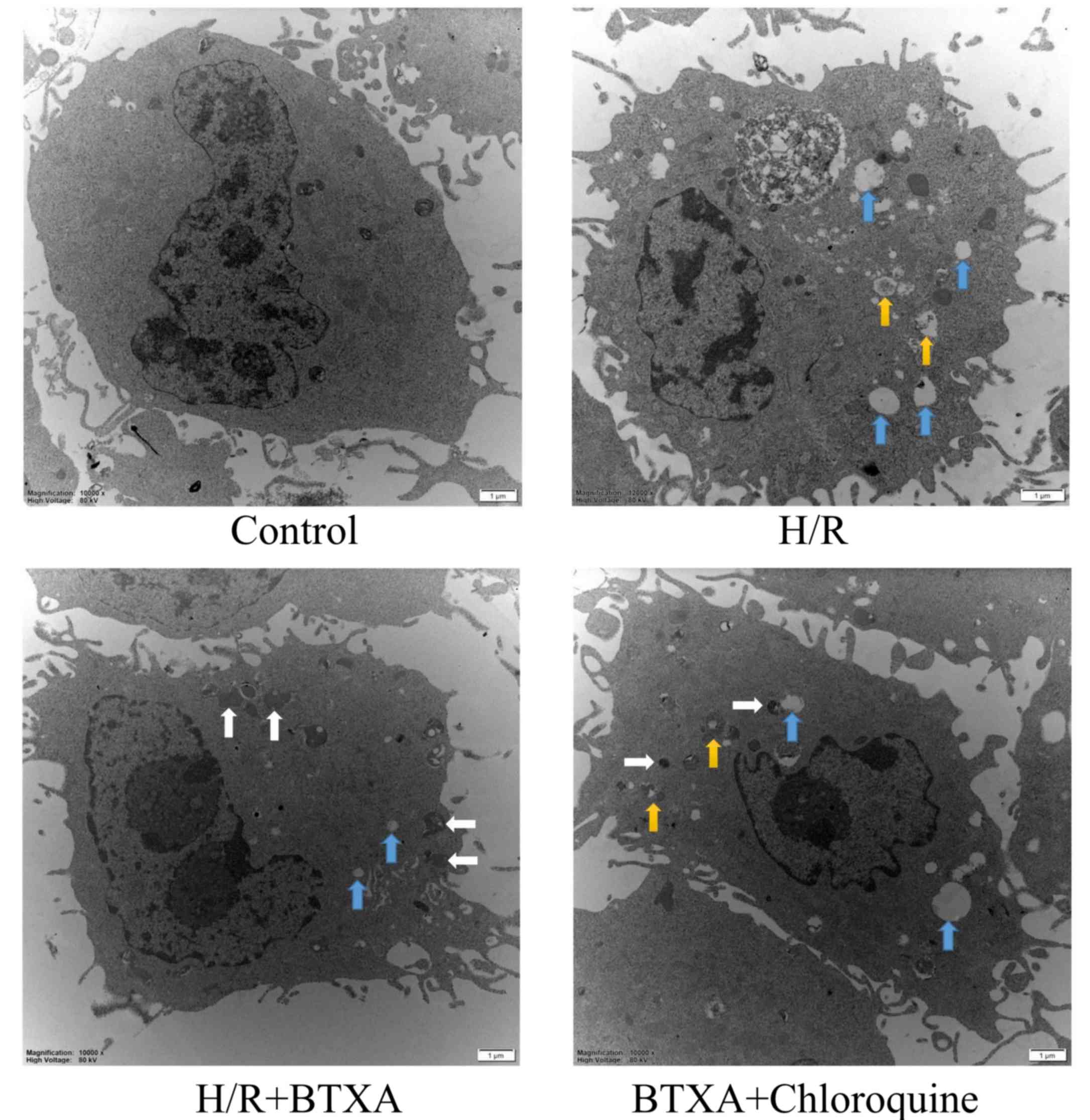|
1
|
Clemens MW, Higgins JP and Wilgis EF:
Prevention of anastomotic thrombosis by botulinum toxin a in an
animal model. Plast Reconstr Surg. 123:64–70. 2009. View Article : Google Scholar : PubMed/NCBI
|
|
2
|
Pretto EA Jr: Reperfusion injury of the
liver. Transplant Proc. 23:1912–1914. 1991.PubMed/NCBI
|
|
3
|
Woolfson RG, Millar CG and Neild GH:
Ischaemia and reperfusion injury in the kidney: Current status and
future direction. Nephrol Dial Transplant. 9:1529–1531.
1994.PubMed/NCBI
|
|
4
|
Carroll WR and Esclamado RM:
Ischemia/reperfusion injury in microvascular surgery. Head Neck.
22:700–713. 2000. View Article : Google Scholar : PubMed/NCBI
|
|
5
|
Kasuya A, Sakabe J and Tokura Y: Potential
application of in vivo imaging of impaired lymphatic duct to
evaluate the severity of pressure ulcer in mouse model. Sci Rep.
4:41732014. View Article : Google Scholar : PubMed/NCBI
|
|
6
|
Wang WZ, Fang XH, Stephenson LL, Khiabani
KT and Zamboni WA: Ischemia/reperfusion-induced necrosis and
apoptosis in the cells isolated from rat skeletal muscle. J Orthop
Res. 26:351–356. 2008. View Article : Google Scholar : PubMed/NCBI
|
|
7
|
Küçüker I, Tuncer S, Sencan A, Bircan F,
Cağlar E, Elmas C and Ayhan S: The effect of surgical and chemical
denervation on ischaemia/reperfusion injury of skeletal muscle. J
Plast Reconstr Aesthet Surg. 65:240–248. 2012. View Article : Google Scholar : PubMed/NCBI
|
|
8
|
Akcal A, Sevim KZ, Yesilada A, Kiyak V,
Sucu DO, Tatlidede HS, Sakiz D and Kaya H: Comparison of
perivascular and intramuscular applied botulinum toxin a
pretreatment on muscle flap ischemia-reperfusion injury and
chemical delay. J Craniofac Surg. 24:278–283. 2013. View Article : Google Scholar : PubMed/NCBI
|
|
9
|
Curin Y, Ritz MF and Andriantsitohaina R:
Cellular mechanisms of the protective effect of polyphenols on the
neurovascular unit in strokes. Cardiovasc Hematol Agents Med Chem.
4:277–288. 2006. View Article : Google Scholar : PubMed/NCBI
|
|
10
|
Xie R, Li X, Ling Y, Shen C, Wu X, Xu W
and Gao X: Alpha-lipoic acid pre- and post-treatments provide
protection against in vitro ischemia-reperfusion injury in cerebral
endothelial cells via Akt/mTOR signaling. Brain Res. 1482:81–90.
2012. View Article : Google Scholar : PubMed/NCBI
|
|
11
|
Olmez I and Ozyurt H: Reactive oxygen
species and ischemic cerebrovascular disease. Neurochem Int.
60:208–212. 2012. View Article : Google Scholar : PubMed/NCBI
|
|
12
|
Arnold PB, Fang T, Songcharoen SJ, Ziakas
G and Zhang F: Inflammatory response and survival of pedicled
abdominal flaps in a rat model after perivascular application of
botulinum toxin type a. Plast Reconstr Surg. 133:491e–498e. 2014.
View Article : Google Scholar : PubMed/NCBI
|
|
13
|
Schweizer DF, Schweizer R, Zhang S, Kamat
P, Contaldo C, Rieben R, Eberli D, Giovanoli P, Erni D and Plock
JA: Botulinum toxin A and B raise blood flow and increase survival
of critically ischemic skin flaps. J Surg Res. 184:1205–1213. 2013.
View Article : Google Scholar : PubMed/NCBI
|
|
14
|
Mizushima N, Levine B, Cuervo AM and
Klionsky DJ: Autophagy fights disease through cellular
self-digestion. Nature. 451:1069–1075. 2008. View Article : Google Scholar : PubMed/NCBI
|
|
15
|
Klionsky DJ and Emr SD: Autophagy as a
regulated pathway of cellular degradation. Science. 290:1717–1721.
2000. View Article : Google Scholar : PubMed/NCBI
|
|
16
|
Nakai A, Yamaguchi O, Takeda T, Higuchi Y,
Hikoso S, Taniike M, Omiya S, Mizote I, Matsumura Y, Asahi M, et
al: The role of autophagy in cardiomyocytes in the basal state and
in response to hemodynamic stress. Nat Med. 13:619–624. 2007.
View Article : Google Scholar : PubMed/NCBI
|
|
17
|
Kroemer G, Marino G and Levine B:
Autophagy and the integrated stress response. Mol Cell. 40:280–293.
2010. View Article : Google Scholar : PubMed/NCBI
|
|
18
|
Moreau K, Luo S and Rubinsztein DC:
Cytoprotective roles for autophagy. Curr Opin Cell Biol.
22:206–211. 2010. View Article : Google Scholar : PubMed/NCBI
|
|
19
|
Levine B and Yuan J: Autophagy in cell
death: An innocent convict? J Clin Invest. 115:2679–2688. 2005.
View Article : Google Scholar : PubMed/NCBI
|
|
20
|
Fulda S and Kogel D: Cell death by
autophagy: Emerging molecular mechanisms and implications for
cancer therapy. Oncogene. 34:5105–5113. 2015. View Article : Google Scholar : PubMed/NCBI
|
|
21
|
Green DR and Levine B: To be or not to be?
How selective autophagy and cell death govern cell fate. Cell.
157:65–75. 2014. View Article : Google Scholar : PubMed/NCBI
|
|
22
|
Cui H, Li X, Li N, Qi K, Li Q, Jin C,
Zhang Q, Jiang L and Yang Y: Induction of autophagy by Tongxinluo
through the MEK/ERK pathway protects human cardiac microvascular
endothelial cells from hypoxia/reoxygenation injury. J Cardiovasc
Pharmacol. 64:180–190. 2014. View Article : Google Scholar : PubMed/NCBI
|
|
23
|
Dong W, Xiao S, Cheng M, Ye X and Zheng G:
Minocycline induces protective autophagy in vascular endothelial
cells exposed to an in vitro model of ischemia/reperfusion-induced
injury. Biomed Rep. 4:173–177. 2016. View Article : Google Scholar : PubMed/NCBI
|
|
24
|
Ghanbarzadeh K, Tabatabaie OR, Salehifar
E, Amanlou M and Khorasani G: Effect of botulinum toxin A and
nitroglycerin on random skin flap survival in rats. Plast Surg
(Oakv). 24:99–102. 2016. View Article : Google Scholar : PubMed/NCBI
|
|
25
|
Wang HC, Zhang HF, Guo WY, Su H, Zhang KR,
Li QX, Yan W, Ma XL, Lopez BL, Christopher TA and Gao F: Hypoxic
postconditioning enhances the survival and inhibits apoptosis of
cardiomyocytes following reoxygenation: Role of peroxynitrite
formation. Apoptosis. 11:1453–1460. 2006. View Article : Google Scholar : PubMed/NCBI
|
|
26
|
Cordivari C, Misra VP, Catania S and Lees
AJ: New therapeutic indications for botulinum toxins. Mov Disord. 8
Suppl 19:S157–S161. 2004. View Article : Google Scholar
|
|
27
|
Bhidayasiri R and Truong DD: Expanding use
of botulinum toxin. J Neurol Sci. 235:1–9. 2005. View Article : Google Scholar : PubMed/NCBI
|
|
28
|
Rohrich RJ, Janis JE, Fagien S and Stuzin
JM: The cosmetic use of botulinum toxin. Plast Reconstr Surg. 112
Suppl 5:(177S): 188S, 188S, 192S; discussion. 189S–191S. 2003.
|
|
29
|
Klein AW: The therapeutic potential of
botulinum toxin. Dermatol Surg. 30:452–455. 2004. View Article : Google Scholar : PubMed/NCBI
|
|
30
|
Maria G, Brisinda G, Bentivoglio AR,
Cassetta E, Gui D and Albanese A: Botulinum toxin injections in the
internal anal sphincter for the treatment of chronic anal fissure:
Long-term results after two different dosage regimens. Ann Surg.
228:664–669. 1998. View Article : Google Scholar : PubMed/NCBI
|
|
31
|
Patel S and Martino D: Cervical dystonia:
From pathophysiology to pharmacotherapy. Behav Neurol. 26:275–282.
2013. View Article : Google Scholar : PubMed/NCBI
|
|
32
|
Winner PK, Sadowsky CH, Martinez WC,
Zuniga JA and Poulette A: Concurrent onabotulinumtoxinA treatment
of cervical dystonia and concomitant migraine. Headache.
52:1219–1225. 2012. View Article : Google Scholar : PubMed/NCBI
|
|
33
|
Olver J, Esquenazi A, Fung VS, Singer BJ
and Ward AB; Cerebral Palsy Institute, : Botulinum toxin
assessment, intervention and aftercare for lower limb disorders of
movement and muscle tone in adults: International consensus
statement. Eur J Neurol. 2 Suppl 17:S57–S73. 2010. View Article : Google Scholar
|
|
34
|
Schulte-Baukloh H: Botulinum toxin for
neurogenic bladder dysfunction. Urologe A. 51:198–203. 2012.(In
German). View Article : Google Scholar : PubMed/NCBI
|
|
35
|
Arnold PB, Merritt W, Rodeheaver GT,
Campbell CA, Morgan RF and Drake DB: Effects of perivascular
botulinum toxin-A application on vascular smooth muscle and flap
viability in the rat. Ann Plast Surg. 62:463–467. 2009. View Article : Google Scholar : PubMed/NCBI
|
|
36
|
Sycha T, Graninger M, Auff E and Schnider
P: Botulinum toxin in the treatment of raynaud's phenomenon: A
pilot study. Eur J Clin Invest. 34:312–313. 2004. View Article : Google Scholar : PubMed/NCBI
|
|
37
|
Neumeister MW: Botulinum toxin type A in
the treatment of raynaud's phenomenon. J Hand Surg Am.
35:2085–2092. 2010. View Article : Google Scholar : PubMed/NCBI
|
|
38
|
Kim YS, Roh TS, Lee WJ, Yoo WM and Tark
KC: The effect of botulinum toxin A on skin flap survival in rats.
Wound Repair Regen. 17:411–417. 2009. View Article : Google Scholar : PubMed/NCBI
|
|
39
|
Uchiyama A, Yamada K, Perera B, Ogino S,
Yokoyama Y, Takeuchi Y, Ishikawa O and Motegi S: Protective effect
of botulinum toxin A after cutaneous ischemia-reperfusion injury.
Sci Rep. 5:90722015. View Article : Google Scholar : PubMed/NCBI
|
|
40
|
Park TH, Lee SH, Park YJ, Lee YS, Rah DK
and Kim SY: Presurgical botulinum toxin a treatment increases
angiogenesis by hypoxia-inducible factor-1α/vascular endothelial
growth factor and subsequent superiorly based transverse rectus
abdominis myocutaneous flap survival in a rat model. Ann Plast
Surg. 76:723–728. 2016. View Article : Google Scholar : PubMed/NCBI
|
|
41
|
Tang YH, Pennington LA, Scordino JW,
Alexander JS and Lian T: Dynamics of early stem cell recruitment in
skin flaps subjected to ischemia reperfusion injury.
Pathophysiology. 23:221–228. 2016. View Article : Google Scholar : PubMed/NCBI
|
|
42
|
Huang L: Beneficial effect of botulinum
toxin A on secondary ischaemic injury of skin flaps in rats. Br J
Oral Maxillofac Surg. 56:144–147. 2018. View Article : Google Scholar : PubMed/NCBI
|
|
43
|
Karalliedde LD and Kappagoda CT: The
challenge of traditional chinese medicines for allopathic
practitioners. Am J Physiol Heart Circ Physiol. 297:H1967–H1969.
2009. View Article : Google Scholar : PubMed/NCBI
|
|
44
|
Zhang L, Liu Y, Lu XT, Wu YL, Zhang C, Ji
XP, Wang R, Liu CX, Feng JB, Jiang H, et al: Traditional Chinese
medication Tongxinluo dose-dependently enhances stability of
vulnerable plaques: A comparison with a high-dose simvastatin
therapy. Am J Physiol Heart Circ Physiol. 297:H2004–H2014. 2009.
View Article : Google Scholar : PubMed/NCBI
|
|
45
|
Wu T, Harrison RA, Chen X, Ni J, Zhou L,
Qiao J, Wang Q, Wei J, Xin D and Zheng J: Tongxinluo (Tong xin luo
or Tong-xin-luo) capsule for unstable angina pectoris. Cochrane
Database Syst Rev. 18:D44742006.
|
|
46
|
Chen WQ, Zhong L, Zhang L, Ji XP, Zhao YX,
Zhang C, Jiang H, Wu YL and Zhang Y: Chinese medicine tongxinluo
significantly lowers serum lipid levels and stabilizes vulnerable
plaques in a rabbit model. J Ethnopharmacol. 124:103–110. 2009.
View Article : Google Scholar : PubMed/NCBI
|
|
47
|
Klionsky DJ, Abdalla FC, Abeliovich H,
Abraham RT, Acevedo-Arozena A, Adeli K, Agholme L, Agnello M,
Agostinis P, Aguirre-Ghiso JA, et al: Guidelines for the use and
interpretation of assays for monitoring autophagy. Autophagy.
8:445–544. 2012. View Article : Google Scholar : PubMed/NCBI
|
|
48
|
Wang JS, Tseng CY and Chao MW: Diesel
exhaust particles contribute to endothelia apoptosis via autophagy
pathway. Toxicol Sci. 156:72–83. 2017. View Article : Google Scholar : PubMed/NCBI
|
|
49
|
Chandrika BB, Yang C, Ou Y, Feng X, Muhoza
D, Holmes AF, Theus S, Deshmukh S, Haun RS and Kaushal GP:
Endoplasmic reticulum stress-induced autophagy provides
cytoprotection from chemical hypoxia and oxidant injury and
ameliorates renal ischemia-reperfusion injury. PLoS One.
10:e1400252015. View Article : Google Scholar
|
|
50
|
Nicoletti F, Fagone P, Meroni P, McCubrey
J and Bendtzen K: mTOR as a multifunctional therapeutic target in
HIV infection. Drug Discov Today. 16:715–721. 2011. View Article : Google Scholar : PubMed/NCBI
|
|
51
|
Donia M, McCubrey JA, Bendtzen K and
Nicoletti F: Potential use of rapamycin in HIV infection. Br J Clin
Pharmacol. 70:784–793. 2010. View Article : Google Scholar : PubMed/NCBI
|
|
52
|
Nicoletti F, Lapenta C, Donati S, Spada M,
Ranazzi A, Cacopardo B, Mangano K, Belardelli F, Perno C and Aquaro
S: Inhibition of human immunodeficiency virus (HIV-1) infection in
human peripheral blood leucocytes-SCID reconstituted mice by
rapamycin. Clin Exp Immunol. 155:28–34. 2009. View Article : Google Scholar : PubMed/NCBI
|
|
53
|
Donia M, Mangano K, Amoroso A, Mazzarino
MC, Imbesi R, Castrogiovanni P, Coco M, Meroni P and Nicoletti F:
Treatment with rapamycin ameliorates clinical and histological
signs of protracted relapsing experimental allergic
encephalomyelitis in Dark Agouti rats and induces expansion of
peripheral CD4+CD25+Foxp3+ regulatory T cells. J Autoimmun.
33:135–140. 2009. View Article : Google Scholar : PubMed/NCBI
|
|
54
|
Bao XH, Naomoto Y, Hao HF, Watanabe N,
Sakurama K, Noma K, Motoki T, Tomono Y, Fukazawa T, Shirakawa Y, et
al: Autophagy: Can it become a potential therapeutic target? Int J
Mol Med. 25:493–503. 2010.PubMed/NCBI
|
|
55
|
Maksimovic-Ivanic D, Fagone P, McCubrey J,
Bendtzen K, Mijatovic S and Nicoletti F: HIV-protease inhibitors
for the treatment of cancer: Repositioning HIV protease inhibitors
while developing more potent NO-hybridized derivatives? Int J
Cancer. 140:1713–1726. 2017. View Article : Google Scholar : PubMed/NCBI
|
|
56
|
Han Y, Fan S, Qin T, Yang J, Sun Y, Lu Y,
Mao J and Li L: Role of autophagy in breast cancer and breast
cancer stem cells (Review). Int J Oncol. 52:1057–1070.
2018.PubMed/NCBI
|
|
57
|
Zhang X, Cheng Q, Yin H and Yang G:
Regulation of autophagy and EMT by the interplay between p53 and
RAS during cancer progression (Review). Int J Oncol. 51:18–24.
2017. View Article : Google Scholar : PubMed/NCBI
|
|
58
|
Horie R, Nakamura O, Yamagami Y, Mori M,
Nishimura H, Fukuoka N and Yamamoto T: Apoptosis and antitumor
effects induced by the combination of an mTOR inhibitor and an
autophagy inhibitor in human osteosarcoma MG63 cells. Int J Oncol.
48:37–44. 2016. View Article : Google Scholar : PubMed/NCBI
|


















